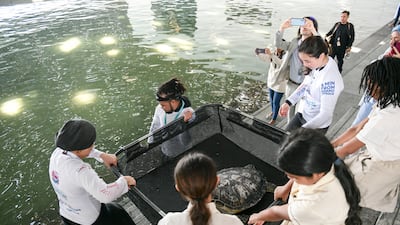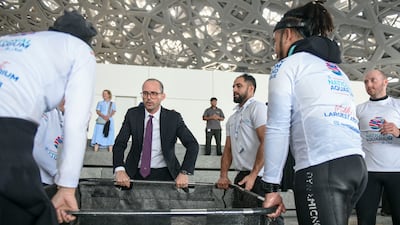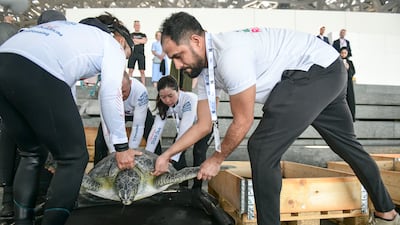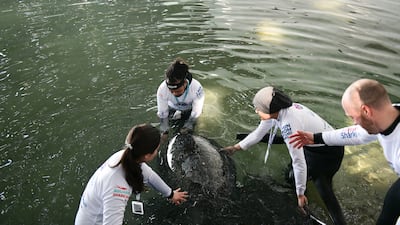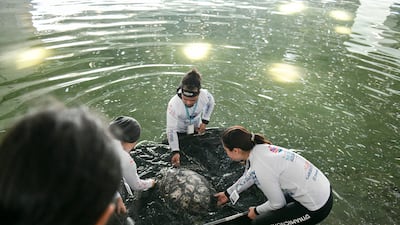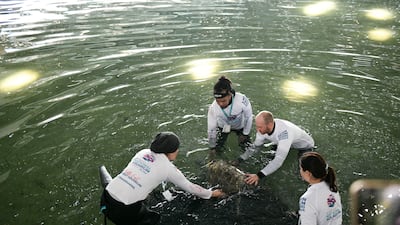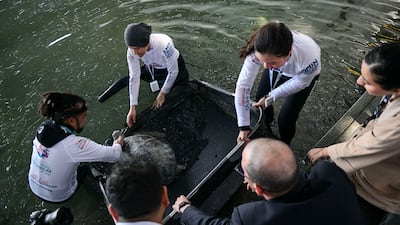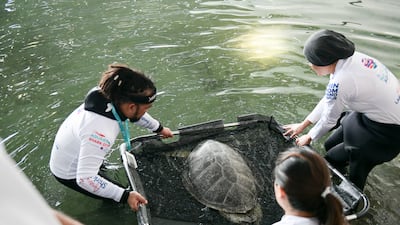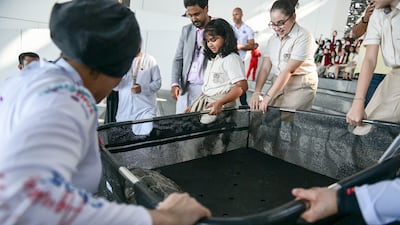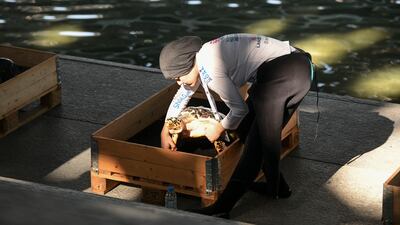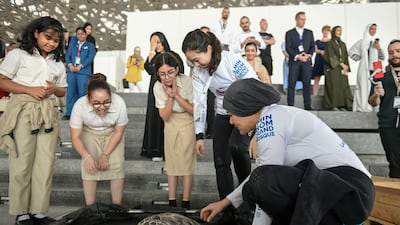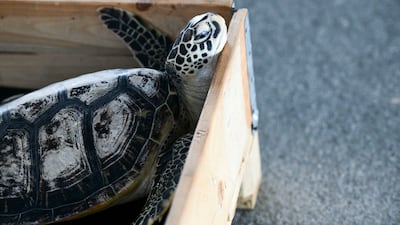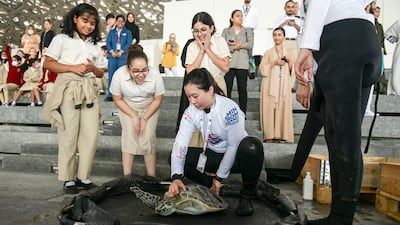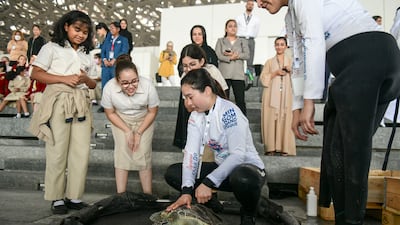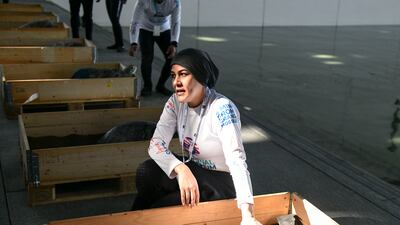An unusual set of visitors has taken temporary refuge at Louvre Abu Dhabi — rehabilitated turtles who are almost ready to go back to the wild.
Ten turtles were transported to the museum on Wednesday from The National Aquarium, which has been rescuing and rehabilitating troubled turtles as part of its Wildlife Rescue Programme with the Environment Agency — Abu Dhabi.
The animals have now been released to a controlled lagoon at the museum, which has been designed to replicate the conditions of the Arabian Gulf. One of the turtles, the biggest in the group at around 100kg, was ceremonially named Zaha, after the famed Arab architect Zaha Hadid.
Young pupils from the Diyafah International School were at the ceremony to witness, and even help, in the release of the turtles.
"We'll have a permanent team here at the Louvre from the National Aquarium, and they will be monitoring these turtles from now until their release date, which is going to be March or April, depending on the season," Paul Hamilton, The National Aquarium's general manager, tells The National.
"Here they have the national conditions of the Arabian Gulf — the sea temperatures, the salinities, a lot of the zooplankton, phytoplankton, everything that they are used to, is here present in this water.
"We release the turtles in the best environment condition for them to succeed, which is typically at the start of summer."
The new step aims to ease the turtles' transition back to the wild, and gradually help them cope with crucial survival activities such as feeding.
"We will do the transition from their rehabilitation diet, back to a diet that replicates the wild. It's like when you're living on a buffet, and then suddenly you have to go work for your food. They need to learn that part of the process," says Hamilton.
Manuel Rabate, director of Louvre Abu Dhabi, said the initiative fits perfectly with the museum's "design and civic duty".
"It is important to know that we are, by construction, connected to the environment, to the element, to the sea, to the islands. By design, I would say, we are in contact with the water and the life in it. Museums are part of a society with a role to play," he said.

Louvre Abu Dhabi will also give a chance for museum-goers "to explore the turtle rehabilitation process through an exciting programme of exhibitions, seminars and events," said Saeed Al Fazari, the strategic affairs executive director of the Department of Culture and Tourism Abu Dhabi, which signed the deal with the environment agency to open the rehabilitation sanctuary at the museum.
More turtles are set to be moved to the 50-capacity lagoon in the coming weeks.
Turtle rehabilitation in the UAE

Turtle rehabilitation is especially a big deal for the UAE, as it is home to five of seven species of marine turtles. Around 5,000 of these animals reside in Abu Dhabi waters, and because of their extremely migratory behaviour, more turtles frequently pass through the Arabian Gulf and are sometimes stranded.
This, in part, led to the creation of the wildlife programme, where The National Aquarium, with its team of aquarist experts, tend to rescued, injured and sick animals at a rehabilitation facility in the capital's Al Qana waterfront area.
Since the start of the programme two years ago, more than 500 turtles have already been discharged through a direct-to-sea release, with some turtles being satellite tagged for continuous monitoring.
The aquarium can also host rescued turtles for years, depending on their condition.
"There's some that have been with us for as long as two years, and that's because their rehabilitation was slow. Some have only been with us for six months," said Hamilton.
"Some turtles will come to us very emaciated, they've been floating out at sea for months. Other turtles, we receive right when they're just running into trouble."
Before they swim back to the sea, the turtles are scored by the aquarium, he explained.
"We check their blood work and make sure that they're not fighting any infections any more, and their overall body conditions".
Other factors include the turtles' willingness to feed and their ability to navigate, among others. The National Aquarium's deputy curator, Lewis Cocks, said sometimes the eventual release of the rescued turtles can be emotional.
"Some of these we've worked on for years, some of them have literally been on death's door when they come in — skinny, missing limbs," he said. "Sometimes you don't even expect it. Even today when we released Zaha, we all just looked at each other and said 'Wow, Zaha's finally got a home'."
